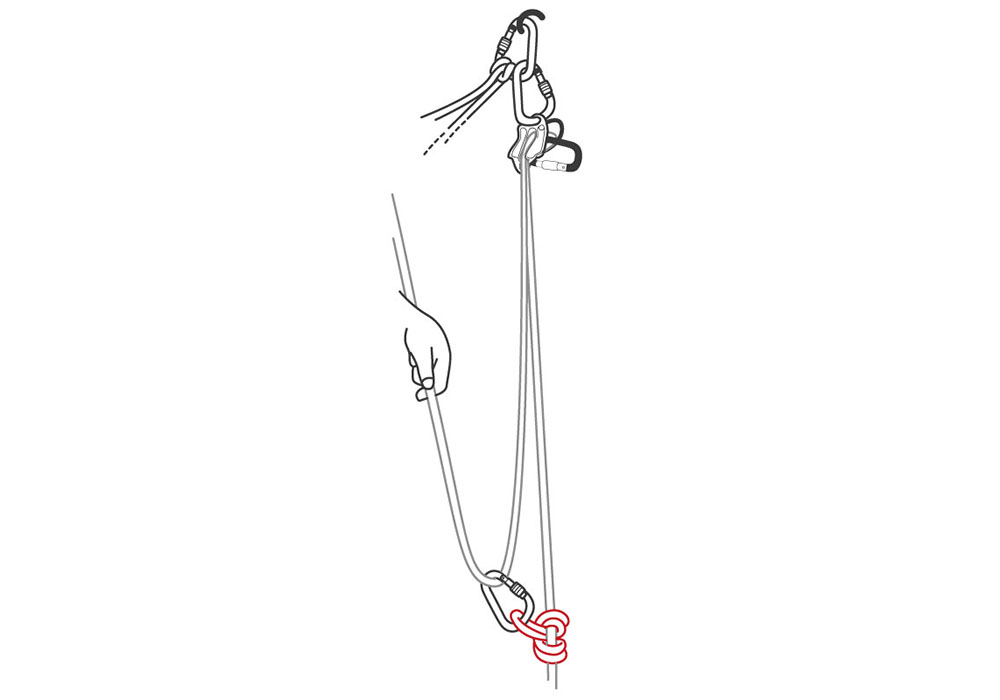Video
Rescue techniques white alpine climbing: Express pulley
Rescue method: Express pulley
The express pulley is traditionally considered a rescue technique, although it’s basically impossible to use it to rescue someone by “pulling up”. Much more often it is used as a pulling aid for the follower. An express pulley briefly provides “more traction”, helping the follower – for example, by allowing them to get to the belay quicker in the event of a minor injury.
Note: An express pulley will not help in the event of severe rope friction.
Rescue method: Prusiks
The prusik knot is not only used for rappelling: In emergency situations, the prusik technique can be used to climb on a hanging rope. This method is helpful for both crevasse rescue and for alpine climbing. It needs the climber to be conscious and physically able to use the prusik technique.
Video
Bivouacking in an emergency situation
Bivouacking on the mountain
If it’s planed or unplanned and the result of an emergency situation: There are some basic rules to observe when bivouacking in alpine terrain. This is the only way the rope team can protect themselves from hypothermia or other health hazards.
BIVOUAC SITE
The ideal place to bivouac is safe from hazards such as falling rocks and ice, avalanches, storms or falls. It also offers protection from the wind and sun and provides sufficient space for the rope team to lie down fully extended. In winter a snow cave can protect from the wind, in summer larger pines or trees can provide protection.
SETTING UP A BIVOUAC
An insulating lower layer is extremely important because it protects from hypothermia. If you didn’t bring a mat, you can use the climbing rope, climbing equipment or backpack as a base layer.
BIVI BAG
Bivi bags that provide space for two people are advantageous in an emergency situation. The climbers’ mutual body warmth can provide additional protection from hypothermia. A good bivi bag is water and dirt repellent and windproof thanks to a PU coating. An additional silver coating on the inside that reflects body heat is also helpful. In addition, bivi bags in a signal color can be spotted quicker by mountain search and rescue or other search parties!
GET 15% DISCOUNT
Refresh your theory - get ready for practice: with the code LAB-ROCK-15
BE WELL PREPARED - with the code LAB-ROCK-15 *
HAVE YOU REFRESHED YOUR KNOWLEDGE FOR YOUR UPCOMING CLIMBING ADVENTURE, BUT YOU STILL LACK THE RIGHT EQUIPMENT? AS A LOYAL MEMBER OF OUR SAFETY COMMUNITY, WE OFFER YOU AN EXCLUSIVE 15% DISCOUNT ON YOUR NEXT PURCHASE ON ORTOVOX.COM.
*You can use this to access the entire range at a reduced price until April 15, 2026 - simply enter the code in your shopping cart and benefit from the discount. The promotion is only valid once and cannot be combined with other voucher promotions.
DISCOVER OUR PRODUCTS

















